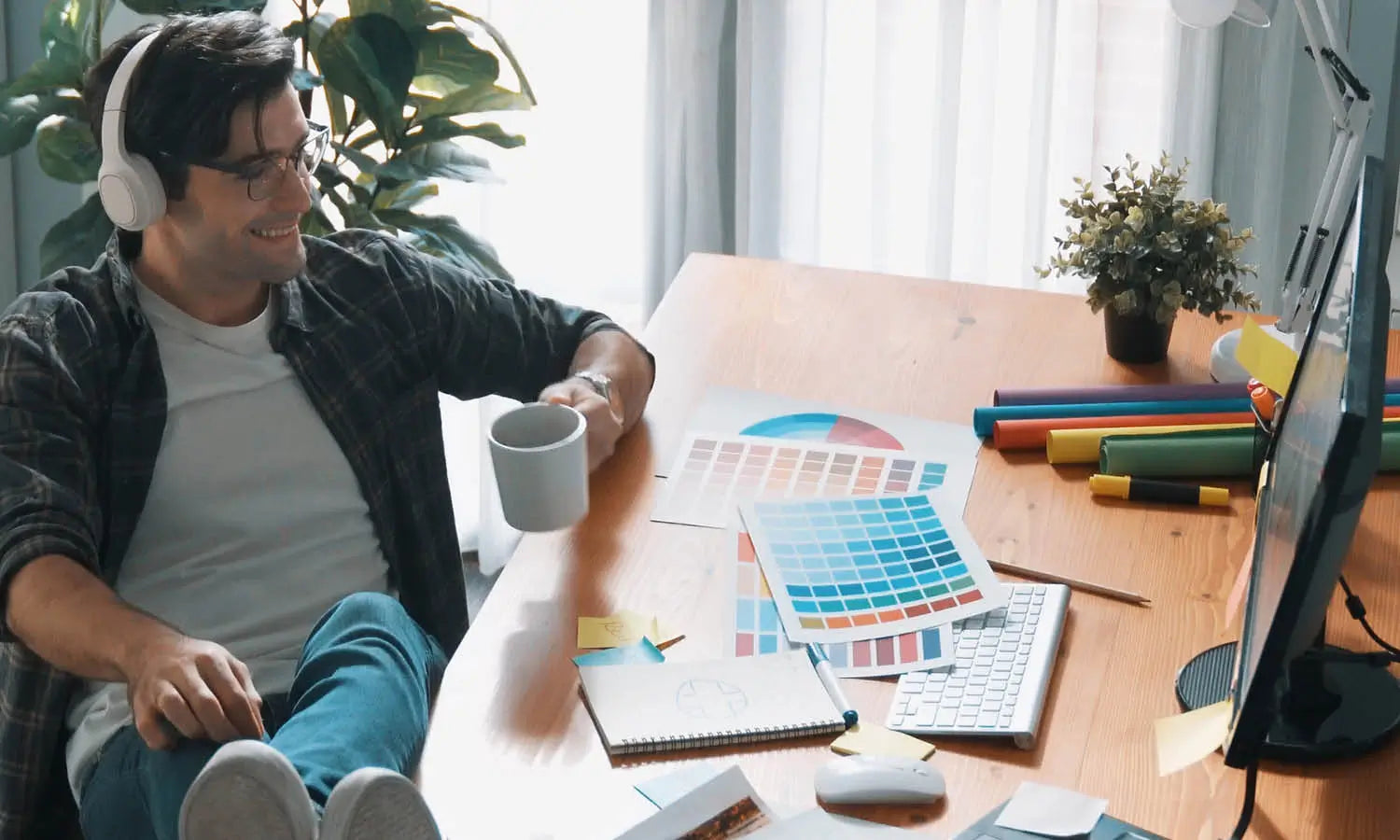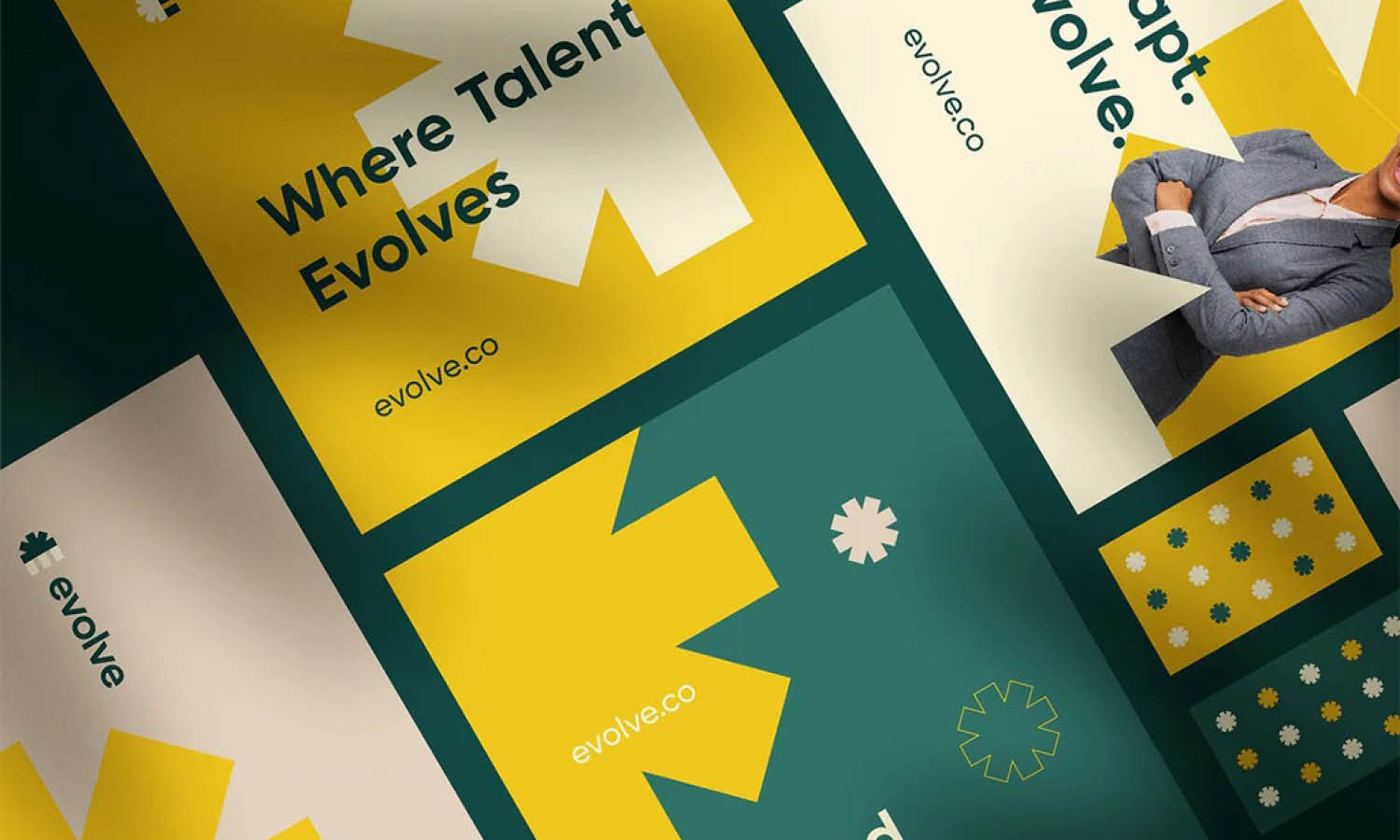Dos and Don'ts When Creating A Logo Design

Source: Matheus, Mendes, Behance, https://www.behance.net/gallery/140100083/Bottega-Maria
Creating the right logo design is more than just about aesthetics; it's about making a memorable and meaningful impression that instantly connects with your audience. A logo serves as the face of a brand, encapsulating its essence in a single graphic. Whether you're a small business owner, a startup, or a designer tasked with crafting this pivotal piece of branding, understanding the dos and don'ts of logo design is essential.
The process of designing a logo requires a careful balance of creativity and strategic thinking. Your logo needs to be simple yet powerful, timeless yet adaptable, and above all, distinctive. This introduction will guide you through key considerations and common pitfalls in logo design. Our goal is to equip you with the knowledge to create a logo that not only looks professional but also carries the core message of the brand effectively across various platforms.
By adhering to these guidelines, you can ensure that your logo design stands out for all the right reasons and becomes a lasting symbol of your brand's identity.
DOs
Understand the Brand
In logo design, the first and perhaps most crucial step is understanding the brand you are tasked to represent. This comprehension forms the backbone of the logo and influences every element from shape to color. Start by delving deep into the brand’s history, its mission, vision, and the values it stands for. Knowing the audience is equally important. Identify who the customers are, their preferences, and what they expect from the brand. This insight ensures that the logo not only appeals to them visually but also connects on an emotional level.
Moreover, consider the industry specifics. Each sector has its nuances and trends, which should influence the logo’s style and complexity. For instance, a tech company might favor a modern, minimalistic logo to convey innovation and efficiency, while a luxury brand might opt for an intricate design that emphasizes elegance and exclusivity. This tailored approach ensures that the logo not only stands out but also complements the industry’s attributes.
By thoroughly understanding the brand, you lay a solid foundation for a logo design that accurately reflects the brand’s identity and resonates with its target audience. This strategic alignment between the brand’s core identity and its visual representation is what turns a simple logo into a powerful brand symbol.
Keep It Simple
Simplicity is the hallmark of effective logo design. A simple logo is not only memorable but also more versatile and recognizable. In the realm of logo design, less is often more. A clean and uncluttered design ensures that the logo remains effective across various applications, whether digital, print, or merchandise. This simplicity allows for easier recognition and aids in building a stronger brand connection with the audience.
When designing, focus on the essential elements. Strip away any superfluous details that do not add value or communicate the brand’s message. Consider iconic logos like Apple or Nike; their effectiveness lies in their minimalistic approach, which captures the essence of the brand in a straightforward yet impactful way. Moreover, a simple logo adapts seamlessly to different sizes and formats, maintaining its integrity whether displayed on a giant billboard or a small smartphone screen.
Moreover, a simple logo design is timeless. It avoids the pitfalls of trends that quickly become outdated, ensuring the logo continues to serve the brand effectively for many years. By prioritizing simplicity, you create a logo that not only stands out in a crowded marketplace but also stands the test of time, providing enduring value to the brand it represents.
Be Original
Originality in logo design is not just a creative ambition; it’s a business necessity. A distinctive logo sets a brand apart from its competition and establishes a unique identity. It is crucial to resist the temptation to mimic popular logos or trends. Instead, strive to create a logo that embodies the unique attributes of the brand it represents.
To achieve originality, start with a comprehensive brainstorming process. Involve sketches and concepts that might initially seem outlandish. These can later be refined to a polished, unique symbol. Thinking outside the conventional boundaries can lead to the discovery of a logo that resonates deeply with the brand’s core values and vision.
Utilizing custom typography or designing a unique symbol can contribute significantly to the logo’s originality. These elements ensure that the logo not only grabs attention but also retains it, fostering brand recall. Remember, a logo that closely resembles another can confuse customers and potentially lead to intellectual property disputes, which are costly and damaging to a brand’s reputation.
An original logo becomes synonymous with the brand, giving it a proprietary visual that is unmistakably associated with its identity. By prioritizing uniqueness in your logo design, you ensure that it not only stands out in a crowded market but also builds a lasting impression on the consumer’s mind.

Source: ECH Creative Agency, Mofeel - Branding, Behance, https://www.behance.net/gallery/119338421/Mofeel-Brand-Identity-Design
Prioritize Versatility
Versatility is a cornerstone of effective logo design. A versatile logo performs well across various mediums and applications without losing its essence. This adaptability is essential as the logo will appear on everything from digital platforms to physical products, each with its own dimensional and color constraints.
To ensure versatility, design the logo to be scalable. It should maintain its impact and legibility whether it’s enlarged on a billboard or reduced to fit on a business card. Avoid using overly intricate details that might get lost at smaller sizes. A versatile logo also translates well between different color schemes, including black and white, which is crucial for some uses like press materials or engravings.
The design process should include testing the logo in multiple environments to ensure it maintains its integrity across different backgrounds, sizes, and formats. This might mean simplifying elements of the design or choosing colors that contrast well with a variety of backgrounds.
By designing with versatility in mind, you ensure that the logo not only fits all possible uses but also continues to uphold the brand’s image consistently, no matter where it appears. A versatile logo supports a cohesive brand identity and enhances brand recognition, making it a valuable asset in the company’s marketing toolkit.
Test Scalability
Testing the scalability of a logo design is imperative to ensure it maintains its effectiveness across all intended applications. A scalable logo retains its clarity and impact whether it's displayed on a small mobile app icon or a large outdoor billboard. This ability to adapt to different sizes without losing quality is crucial for maintaining brand consistency and recognition.
When designing a logo, start with a size that allows for attention to detail, then scale down to assess clarity and impact at smaller sizes. A logo must be legible and recognizable at the smallest size it will be displayed, including on promotional items like pens or keychains. To ensure scalability, avoid overly complex elements that can become indistinct when reduced.
Use vector graphics for creating logos because they can scale infinitely without losing resolution. Testing the logo in various sizes during the design process can help identify and correct any issues that impair its functionality when scaled. Make adjustments as necessary to simplify elements that do not scale well.
Scalability is not just a technical requirement—it's a strategic approach to ensure that your logo can effectively represent the brand across all platforms and touchpoints. By prioritizing scalability from the start, you ensure that the logo serves its purpose as a fundamental part of the brand's visual identity, adaptable and effective, no matter the size.
DON’Ts
Avoid Overcomplication
In logo design, complexity can be a detriment rather than a benefit. An overcomplicated logo can confuse the viewer, detract from the brand message, and cause logistical issues in reproduction across media. The best logos are those that convey their message simply and effectively, making them easy to recognize and remember.
To avoid overcomplication, focus on the essential elements that represent the brand. Each component of the logo should have a clear purpose and contribute to the overall understanding of the brand. Strip away any non-essential elements that do not add value. This minimalist approach not only enhances the logo's clarity but also its versatility and recognizability.
Consider the logos of industry leaders like Apple or Google, which are simple yet iconic. Their simplicity allows for immediate recognition and easy application across various platforms and materials. In your design process, continually ask whether each element is necessary and what it adds to the overall effect.
Additionally, simple logos are easier and more cost-effective to reproduce, ensuring consistency across digital and physical mediums, from high-resolution displays to textured business materials. Keeping the design straightforward prevents potential reproduction issues such as color discrepancies or detail loss.
Steer Clear of Trendy Fonts and Colors
When designing a logo, it's important to steer clear of overly trendy fonts and colors that might quickly go out of style. Choosing classic and enduring elements in your logo design ensures that it remains effective and relevant for many years, without requiring frequent updates to maintain its appeal.
Trendy fonts and flashy colors can make a logo appear modern and eye-catching initially, but these elements often date quickly as trends evolve. Instead, opt for timeless typography and color schemes that reflect the brand's personality while maintaining a professional appearance. For instance, serif fonts can convey trustworthiness and tradition, while sans-serif fonts offer a clean and modern feel.
Furthermore, consider the psychological impact of colors in your logo design. Each color evokes different emotions and associations. Blue, often used to inspire trust and reliability, is favored by financial institutions, whereas green, symbolizing growth and health, is popular among environmental organizations. Select colors that not only look good but also align with the values and ethos of the brand.
By avoiding trendy design choices, your logo remains versatile and functional across various platforms and decades. This approach not only enhances brand recognition but also ensures that the logo does not require redesigns to stay relevant, ultimately saving time and resources while strengthening the brand’s identity in the market.

Source: Kwaku Amprako, Dynamik, Behance, https://www.behance.net/gallery/164310371/Dynamik
Ignore Brand Consistency
While exploring creative freedom in logo design, it's crucial to maintain a focus on brand consistency. Ignoring brand consistency can lead to a disjointed brand identity, confusing your audience and diluting the impact of your marketing efforts.
Brand consistency involves aligning the logo with other brand elements like color schemes, typography, and overall style. This cohesion ensures that the logo not only stands out but also fits seamlessly within the broader brand narrative. For example, a logo that uses a futuristic font while the brand typically employs a classic, serif font in its communications can create a mismatched visual identity.
Moreover, consistent branding across all touchpoints enhances brand recognition and loyalty. Customers are more likely to remember and trust a brand that presents itself consistently. The logo, as a central component of brand identity, should reinforce this through careful alignment with the brand’s core attributes and visual elements.
In the process of logo design, always refer back to the existing brand guidelines. These guidelines serve as a roadmap, ensuring that the logo reflects the brand’s established identity and enhances its market position. If brand guidelines do not exist, consider the core values and personality of the brand as you design, ensuring that the logo conveys these effectively.
Copy Popular Designs
Copying popular designs in logo creation is a common pitfall that should be avoided. While it might be tempting to draw inspiration from successful logos, duplicating them can undermine your brand's uniqueness and lead to legal complications. A logo should be a distinctive symbol that reflects the brand's individuality and ethos, not a second-rate version of another company's identity.
When you copy a design, you risk your logo being perceived as unoriginal or derivative, which can damage the brand's reputation and trustworthiness. Instead, strive for originality by creating a logo that stands out for its unique features while still aligning with the brand's core values and target audience. This approach not only enhances brand recognition but also fosters a sense of authenticity and credibility.
Furthermore, remember that popular logos are often trademarked, meaning their design is legally protected. Using similar elements can lead to infringement issues, costly legal disputes, and the need to redesign the logo. To avoid these risks, conduct thorough research to ensure that your logo design does not inadvertently infringe on existing trademarks.
Ignore Legal Checks
Ignoring legal checks in the logo design process can lead to significant risks, including trademark infringement, which could result in legal actions and necessitate a costly redesign of the logo. To safeguard the brand and its logo, it's essential to conduct thorough legal checks before finalizing the design.
The first step in this process is to conduct a comprehensive trademark search. This helps ensure that the logo or elements of the logo do not inadvertently infringe on existing trademarks. This search should extend beyond national boundaries, especially if the brand intends to operate or expand internationally.
Legal scrutiny also involves ensuring that the logo does not contain prohibited or offensive elements that could lead to legal challenges or damage the brand's reputation. Consulting with a legal expert in trademark law or a specialized intellectual property attorney can provide insights and guidance on these matters, ensuring that the logo is not only original but also legally compliant.
Moreover, securing a trademark for the logo is a proactive step that can protect the brand's visual identity from misuse or infringement by competitors. This legal protection solidifies the logo’s association with the brand and provides legal recourse if others attempt to copy or misuse it.
Conclusion
Crafting a successful logo design is a blend of creativity, strategic thinking, and attention to legal and brand specifics. By prioritizing originality, simplicity, and versatility, and steering clear of copying and legal negligence, designers can create logos that not only capture the essence of the brand but also stand the test of time. Each step, from understanding the brand’s core to ensuring the logo's scalability and legal clearance, plays a crucial role in developing a powerful visual identity that is both effective and enduring. A well-designed logo is not just a symbol but a vital tool in building a strong, recognizable brand.
Let Us Know What You Think!
Every information you read here are written and curated by Kreafolk's team, carefully pieced together with our creative community in mind. Did you enjoy our contents? Leave a comment below and share your thoughts. Cheers to more creative articles and inspirations!
















Leave a Comment